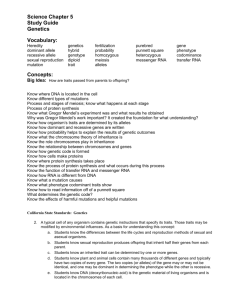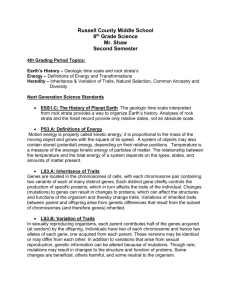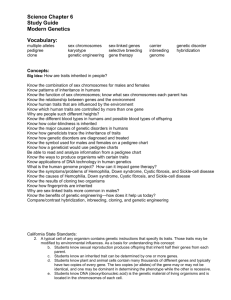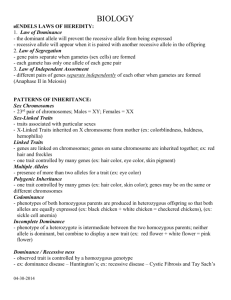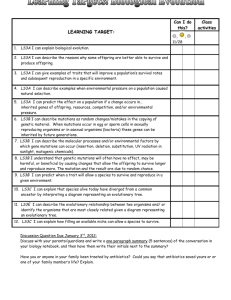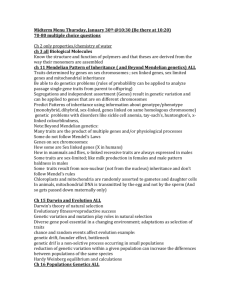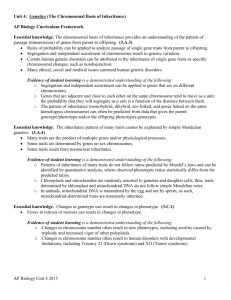Evolution Review Guide
advertisement
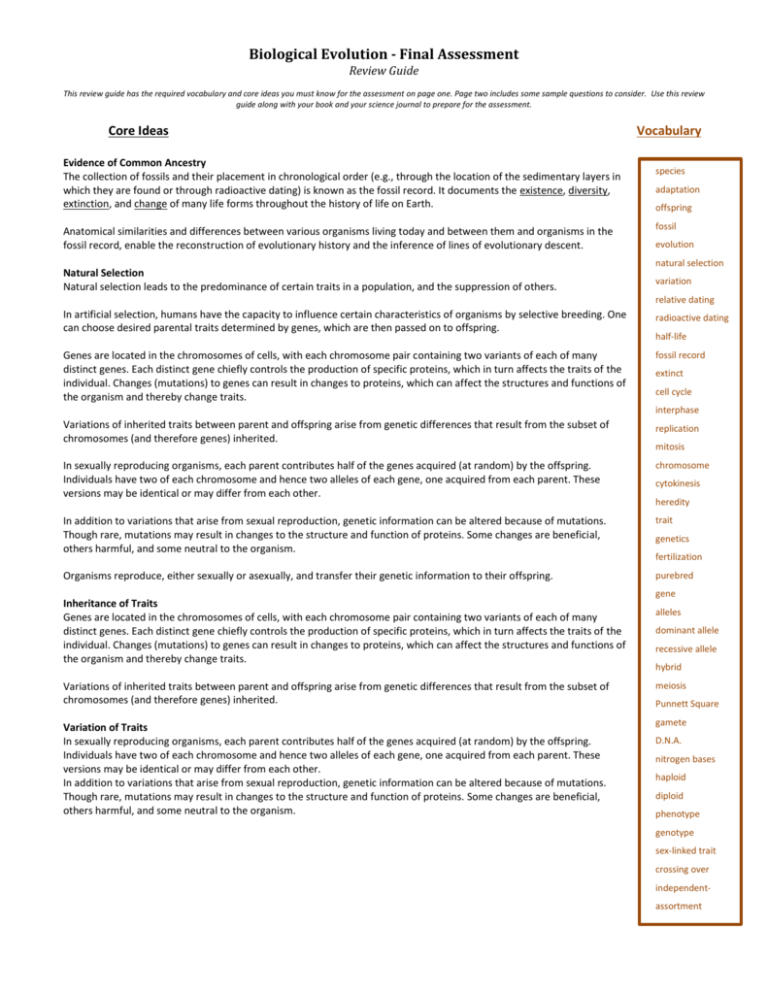
Biological Evolution - Final Assessment Review Guide This review guide has the required vocabulary and core ideas you must know for the assessment on page one. Page two includes some sample questions to consider. Use this review guide along with your book and your science journal to prepare for the assessment. Core Ideas Evidence of Common Ancestry The collection of fossils and their placement in chronological order (e.g., through the location of the sedimentary layers in which they are found or through radioactive dating) is known as the fossil record. It documents the existence, diversity, extinction, and change of many life forms throughout the history of life on Earth. Anatomical similarities and differences between various organisms living today and between them and organisms in the fossil record, enable the reconstruction of evolutionary history and the inference of lines of evolutionary descent. Natural Selection Natural selection leads to the predominance of certain traits in a population, and the suppression of others. Vocabulary species adaptation offspring fossil evolution natural selection variation relative dating In artificial selection, humans have the capacity to influence certain characteristics of organisms by selective breeding. One can choose desired parental traits determined by genes, which are then passed on to offspring. radioactive dating Genes are located in the chromosomes of cells, with each chromosome pair containing two variants of each of many distinct genes. Each distinct gene chiefly controls the production of specific proteins, which in turn affects the traits of the individual. Changes (mutations) to genes can result in changes to proteins, which can affect the structures and functions of the organism and thereby change traits. fossil record half-life extinct cell cycle interphase Variations of inherited traits between parent and offspring arise from genetic differences that result from the subset of chromosomes (and therefore genes) inherited. replication In sexually reproducing organisms, each parent contributes half of the genes acquired (at random) by the offspring. Individuals have two of each chromosome and hence two alleles of each gene, one acquired from each parent. These versions may be identical or may differ from each other. chromosome In addition to variations that arise from sexual reproduction, genetic information can be altered because of mutations. Though rare, mutations may result in changes to the structure and function of proteins. Some changes are beneficial, others harmful, and some neutral to the organism. trait Organisms reproduce, either sexually or asexually, and transfer their genetic information to their offspring. purebred Inheritance of Traits Genes are located in the chromosomes of cells, with each chromosome pair containing two variants of each of many distinct genes. Each distinct gene chiefly controls the production of specific proteins, which in turn affects the traits of the individual. Changes (mutations) to genes can result in changes to proteins, which can affect the structures and functions of the organism and thereby change traits. mitosis cytokinesis heredity genetics fertilization gene alleles dominant allele recessive allele hybrid Variations of inherited traits between parent and offspring arise from genetic differences that result from the subset of chromosomes (and therefore genes) inherited. meiosis Variation of Traits In sexually reproducing organisms, each parent contributes half of the genes acquired (at random) by the offspring. Individuals have two of each chromosome and hence two alleles of each gene, one acquired from each parent. These versions may be identical or may differ from each other. In addition to variations that arise from sexual reproduction, genetic information can be altered because of mutations. Though rare, mutations may result in changes to the structure and function of proteins. Some changes are beneficial, others harmful, and some neutral to the organism. gamete Punnett Square D.N.A. nitrogen bases haploid diploid phenotype genotype sex-linked trait crossing over independentassortment Biological Evolution - Final Assessment Review Guide Please be prepared to complete or answer the questions below. 1) How does the structure of DNA help account for the way in which DNA copies itself? 2) Develop an illustrated model to describe why asexual reproduction results in offspring with identical genetic information and sexual reproduction results in offspring with genetic variation. (crossing over & independent assortment required) 3) What is the significance of Gregor Mendel’s work to our understanding of heredity? 4) Why are some genetic traits more prevalent in a population than others? Why/how does this occur? 5) Create an illustrated model of how the gender of a human being is determined. Show and explain why the chances are 50 -50.
